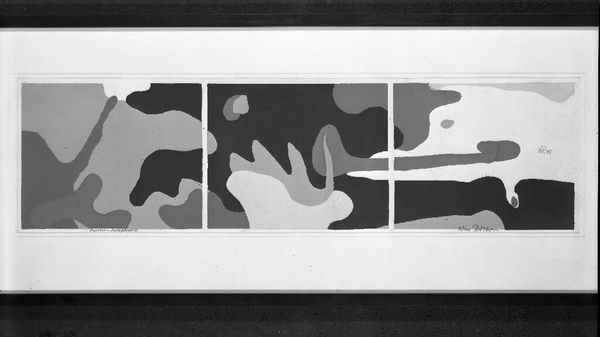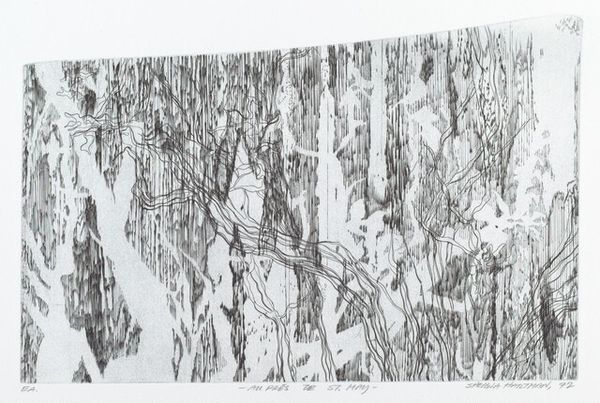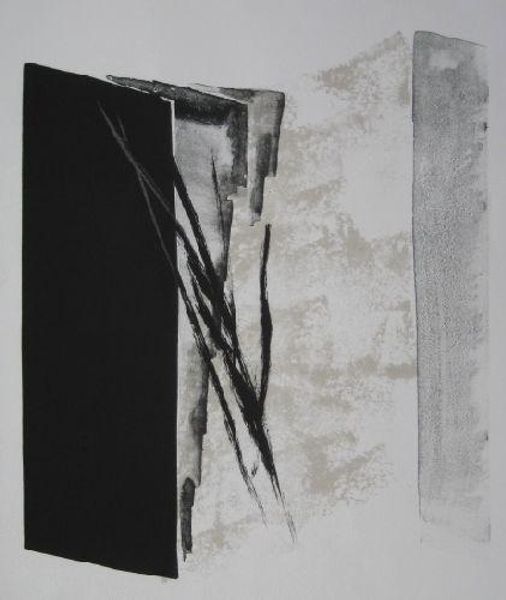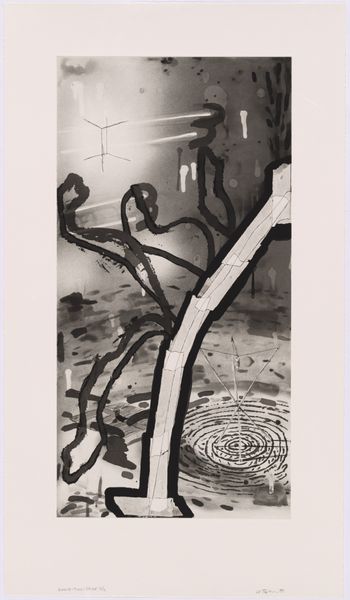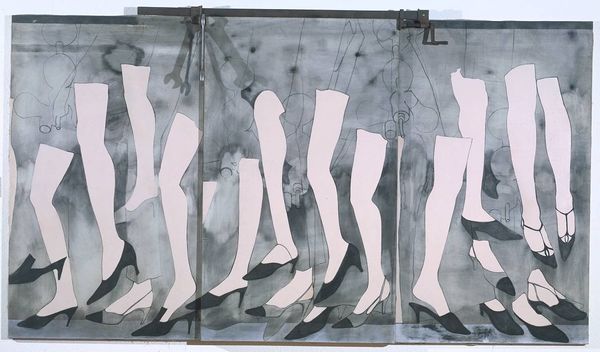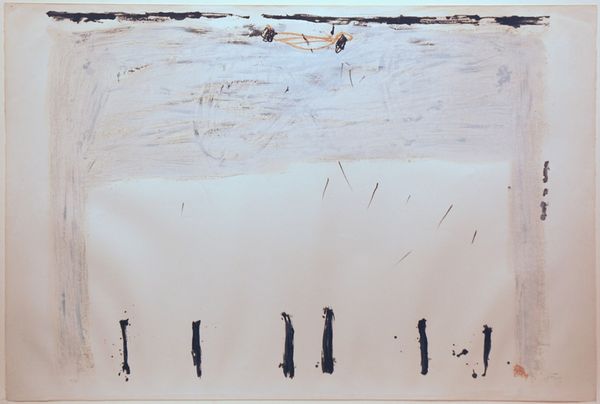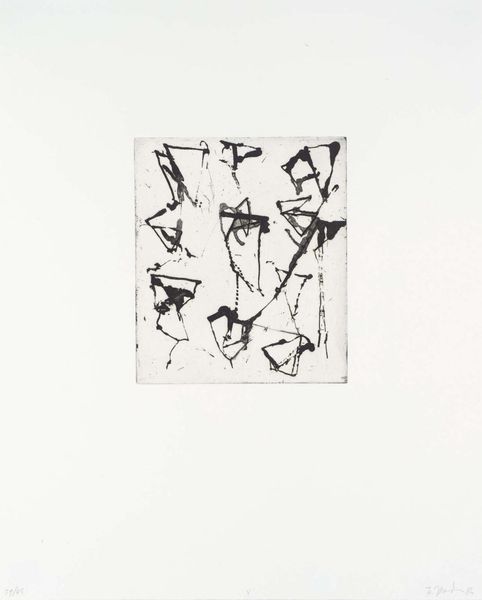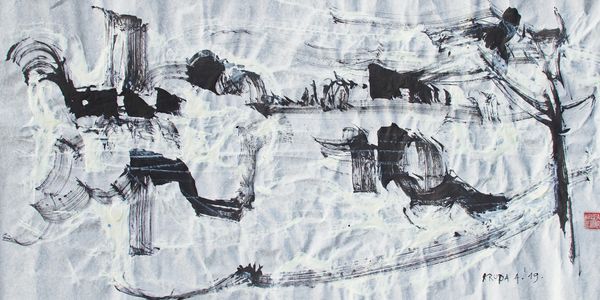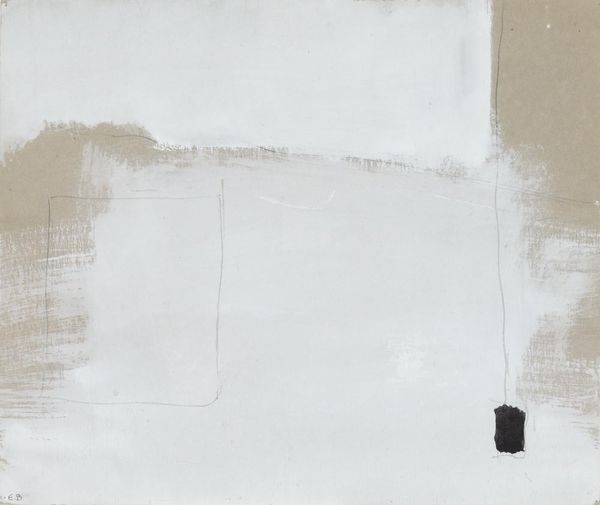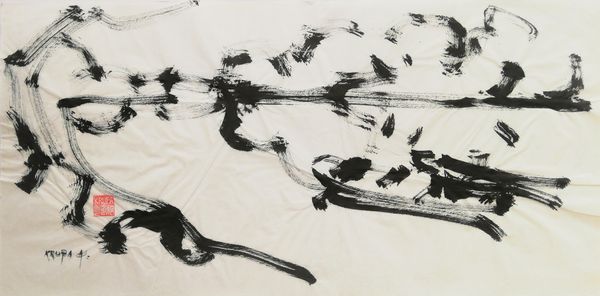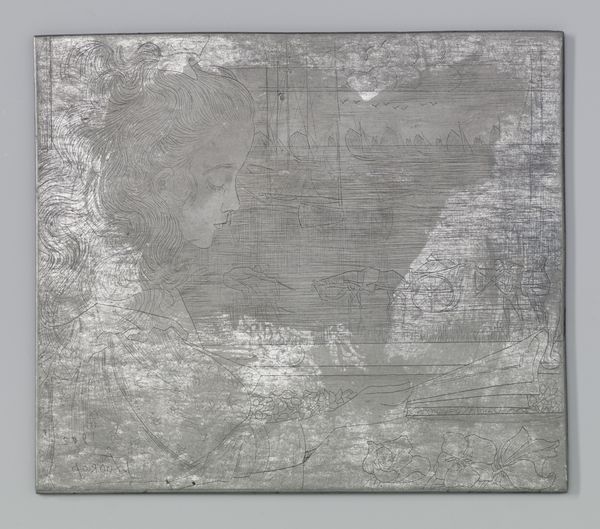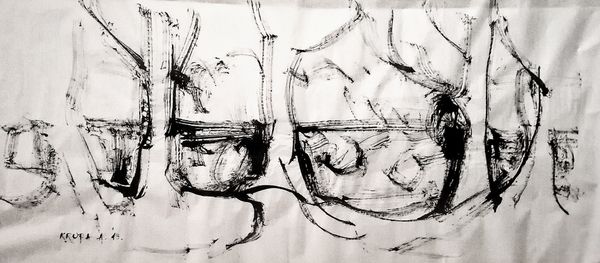
Copyright: Gustav Metzger,Fair Use
Curator: Here we have Gustav Metzger’s “Recreation of First Public Demonstration of Auto-Destructive Art,” created in 2004. It's a rather striking assemblage, isn't it? Editor: It is. My first impression is one of unease. There’s something inherently unsettling about the ripped textile and scattered objects; it hints at a world coming apart. A sort of visual scream? Curator: Indeed. The original demonstration took place in 1960, where Metzger attacked nylon sheets with acid, displaying the destructive process as a form of art and protest. What we see now is a re-staging of that moment. Note how the torn fabric hanging at the back forms dark voids against the pristine white gallery wall, it’s quite effective at provoking feelings of loss, would you agree? Editor: Absolutely. It speaks volumes through absences and the contrast between the damaged textile and the surrounding space. The monochromatic palette emphasizes form and texture. One might see the torn material and consider this a postmodern interpretation of iconoclasm... almost anti-art itself. Curator: Precisely, anti-art that's also deeply rooted in its time. Metzger aimed to reflect the destructive potential of humanity, particularly in the shadow of nuclear weapons and environmental degradation. The debris and other materials resting on the table extend this conversation beyond just what we see at the wall. Editor: Do you feel there is any hope amongst all that chaos and destruction? Curator: Well, perhaps hope lies in the act of creation and re-creation. Metzger brings the concept of auto-destructive art back for re-examination, offering us a chance to reflect on our own destructive tendencies and hopefully, choose a different path. Or maybe, that's just me being optimistic about it all. Editor: I think there is reason for optimism in any artistic investigation that can evoke the kind of social dialogue we have just had. Thank you. Curator: My pleasure, it's always interesting to see where artwork like this will lead.
Comments
No comments
Be the first to comment and join the conversation on the ultimate creative platform.
